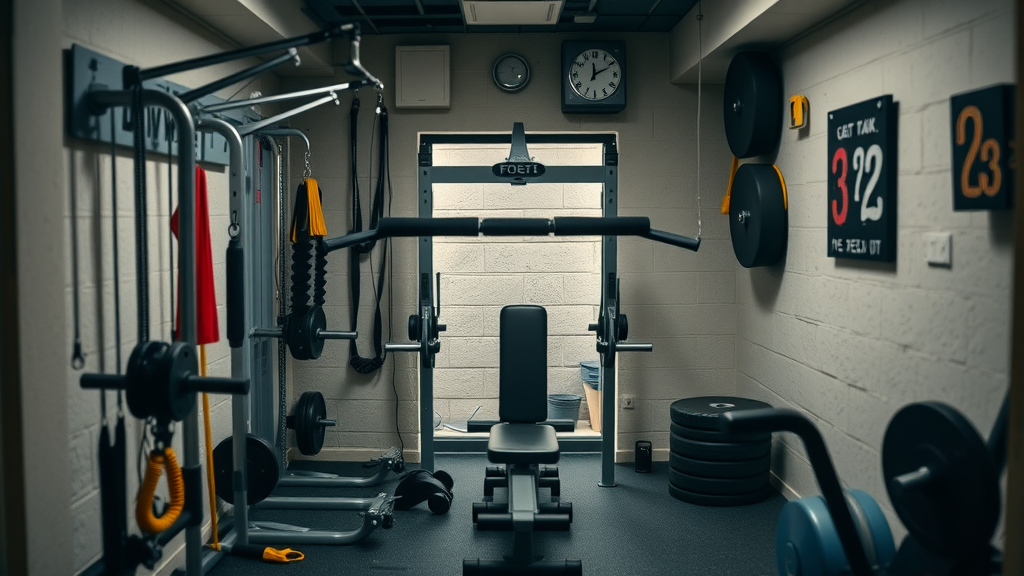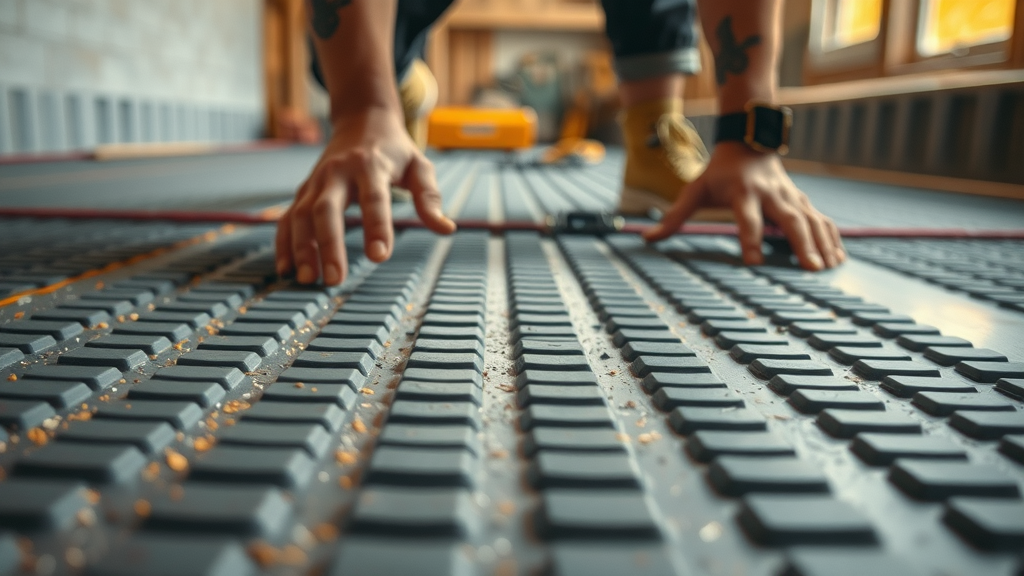Unlock the potential of your home's lower level with a purpose that goes beyond storage or laundry duty. Transform it into the ultimate fitness haven. Did you know that more than 30% of new home gym installations are now taking place in basements? This guide will walk you through the benefits, essentials, innovative ideas, and maintenance tips to develop a stunning and functional basement home gym.
Why Choose Basement Home Gyms for Your Workout?
The Rise of Basement Home Gyms: A Surprising Statistic
Basement home gyms are no longer a rare luxury. In recent years, there has been a notable shift towards installing gyms in basements, with an increase of 40% in such setups over the last five years. This growing trend is fueled by practical considerations and convenience. Basements provide an ideal setting for a secluded workout space, minimizing distractions and maximizing concentration on fitness goals.
Advantages of Basement Home Gyms Over Traditional Gyms
Unlike traditional gyms, basement home gyms offer unwavering accessibility. Say goodbye to the commute and waiting for machines. A basement gym is always at your disposal 24/7. Furthermore, they provide a personal space tailored specifically to your fitness routine. This means no distractions from other gym-goers and a layout that caters exclusively to your workout needs. Additionally, owning your fitness equipment ensures cleanliness and hygienic usage, which is a significant health benefit.
Understanding the Concept of Home Gym Ideas in Basements
Creating a basement home gym isn't merely about arranging a few pieces of equipment. It's about designing a motivating environment. The concept revolves around maximizing the potential of limited space, integrating vital equipment smoothly into the area while maintaining aesthetics. Think creatively when it comes to home gym ideas, incorporating practical storage solutions, and using decor that inspires a workout, such as mirrors and motivational posters. Harnessing the basement as an efficient and stylish workout space requires innovation and a dash of creativity.

10 Essential Components for a Functional Basement Gym
Choosing the Right Gym Equipment for Small Spaces
Selecting the correct gym equipment is fundamental to optimizing your basement gym, especially when space is at a premium. It's crucial to choose compact yet versatile equipment that offers multi-functionality. An adjustable bench can serve as the cornerstone for numerous exercises, while adjustable dumbbells provide flexibility without needing an extensive weight rack. The use of space-saving technology, like foldable or collapsible equipment, allows for efficient storage and more room for activity.
The Importance of a Squat Rack and Dumbbell Rack
A squat rack and dumbbell rack are essential for any basement home gym aiming to cater to diverse workout needs. The squat rack supports various exercises beyond leg day, providing a robust framework for strength training. On the other hand, a dumbbell rack helps keep the workout space organized and safe, ensuring that weights don't clutter the floor, reducing the risk of trips and falls. Investing in quality racks enhances the safety, functionality, and overall aesthetic of your gym environment.

| Equipment | Features | Costs |
|---|---|---|
| Adjustable Dumbbells | Space-efficient, versatile weight range | $200 - $600 |
| Squat Rack | Supports barbell exercises, safety bars | $300 - $1000 |
| Treadmill | Foldable, various settings for speed and incline | $500 - $2000 |
Transforming Your Basement: Creative Gym Ideas
Innovative Gym Ideas to Maximize Limited Space
Limited space often sparks the greatest creativity. Utilize vertical storage to clear floor space and leverage wall installations like a wall mirror for visual expansion. Consider incorporating pull-up bars or resistance bands within door frames or wall mounts. Designated zones for different parts of your workout routine, such as an area for yoga mats or a station for cardio, help make the most out of limited dimensions.

Incorporating a Rubber Floor for Safety
When it comes to safety, installing a rubber floor in your basement gym is a sound investment. It offers excellent support and cushioning, reducing the risk of injuries during workouts. Rubber flooring is not only durable, standing up to heavy use and weight impacts, but also provides sound insulation, minimizing noise transfer to other parts of the house. It's an essential part of a gym floor that enhances both safety and overall comfort during exercise.
Cost-Effective Decor Ideas for Personalizing Your Gym
Personalizing your basement gym with decor needn't break the bank. Simple touches such as motivational posters and wall art can inspire and energize your sessions. Mirrors on the walls will create a sense of space and assist in refining your exercise form. Consider crafting a cozy home atmosphere through strategic lighting choices and vibrant color schemes that capture your personal style, making the gym a pleasure to spend time in.

FAQs About Basement Home Gyms
Is a basement gym a good idea?
Absolutely. A basement gym offers a private workout environment that limits distractions, allowing for more focused training sessions and optimal use of free time.
What is the best home gym flooring basement?

Rubber flooring is recommended due to its robustness and cushioning. It provides shock absorption and is easy to clean, making it an ideal choice for workouts from cardio to weightlifting.
How much does a simple home gym cost?
The cost of setting up a basic home gym can vary widely based on equipment choice and brand preferences. However, a simple setup can start at approximately $500, covering essential exercise gear.
How to ventilate a basement gym?
Proper ventilation is crucial to regulate temperature and control humidity. Installing ventilation systems or dehumidifiers helps maintain air quality and comfort during workouts.
Potential Challenges and Solutions for Basement Gyms
Dealing with Humidity and Moisture Control
Basements are often prone to humidity, which can affect both equipment and comfort levels. Implementing a dehumidifier is the first step to managing moisture levels. Ensure your equipment is covered with protective coatings, and regularly inspect for any signs of mold or dampness.

Optimizing Lighting without Natural Light Sources
Natural light is often scarce in basements, making lighting choice crucial. Equip your gym with LED lighting solutions to provide bright, even lighting throughout. Position lights at varied heights and angles to eliminate shadows and foster a more inviting and energizing space.
Noise Reduction Techniques for Peaceful Home Gyms
To minimize noise transfer to other parts of your home, use rubber flooring combined with acoustic ceiling tiles. Additionally, installing soundproofing panels on the walls will absorb excess noise and create a serene environment perfect for concentration.
Expert Opinions: Basement Home Gym Benefits
Industry Expert Says: "A basement gym is not just about fitness; it's about creating a personal sanctuary."

Step-by-Step Guide to Setting Up Your Basement Home Gym
Planning Your Layout: From Gym Equipment to Spatial Design
Effectively plan the layout of your basement gym by considering the dimensions and flow of the space. Begin by sketching a floor plan that includes zones for cardio, strength training, and recovery. This plan should allow for easy movement and access to all workout equipment.
Purchasing and Installing Essential Equipment
Invest in high-quality, durable gym equipment that caters to your fitness needs and fits within your planned layout. Secure deals from reputable providers and opt for equipment that serves multiple functions to save on space and costs. Installation should follow best practices for stability and safety.
Maintaining Your Basement Gym for Long-term Use
Regular Cleaning and Equipment Maintenance Tips
Keep your basement home gym in top condition through regular cleaning and maintenance. Wipe down equipment and flooring after each use to prevent buildup and bacteria. Conduct periodic checks for wear and tear, especially on moving parts, to ensure everything operates smoothly.
Updating Your Gym as Needs and Technology Evolve
Stay ahead by updating your gym as new technologies emerge and your fitness goals evolve. Introduce smart equipment, upgrade exercise tools, and modify your setup to accommodate expanding needs to keep workouts challenging and engaging.
Conclusion: Embark on Your Fitness Journey with Basement Home Gyms
Start Your Transformation Today
What You'll Learn
Understand key components, setup strategies, potential challenges, and maintenance tips for basement home gyms.
 Add Row
Add Row  Add
Add 



Write A Comment